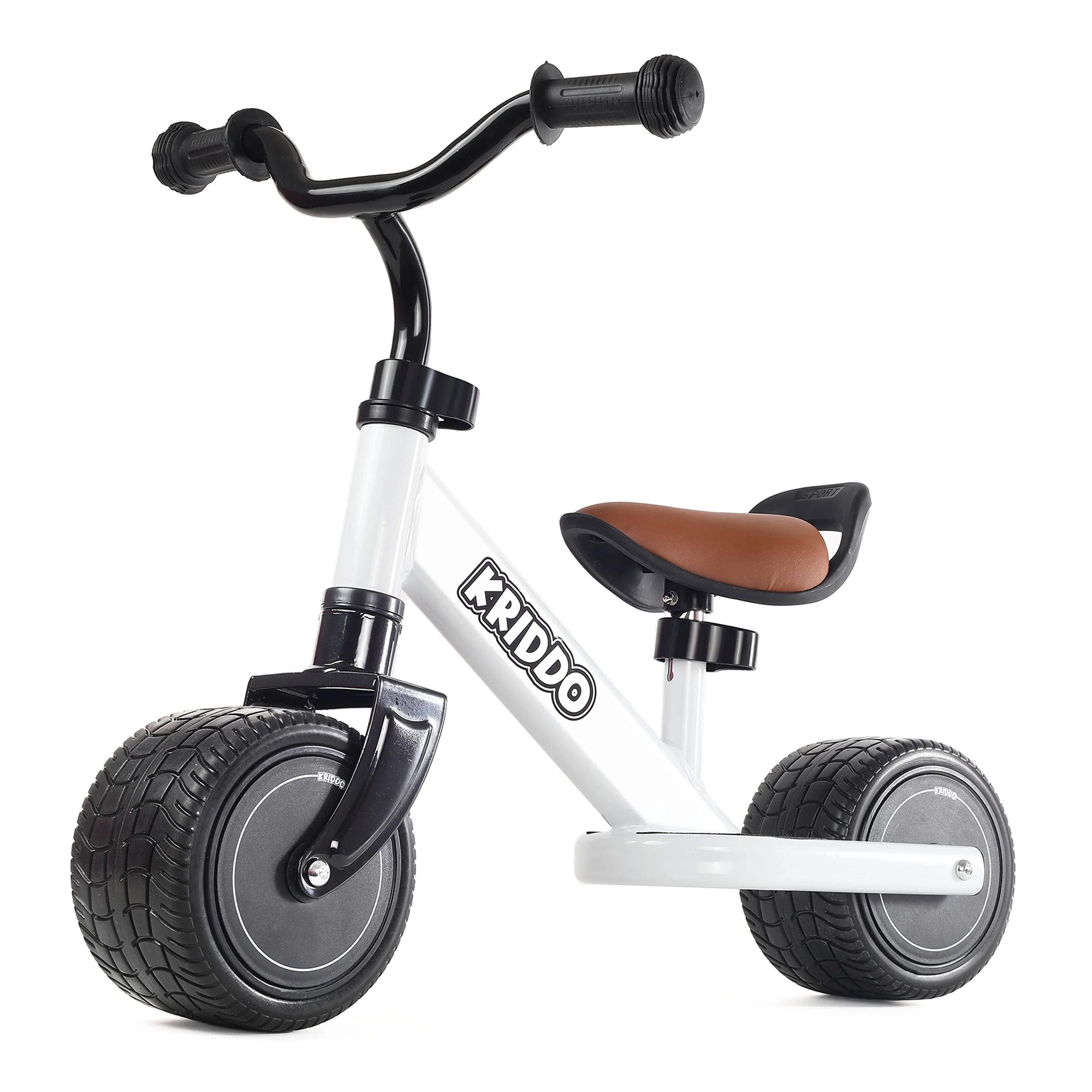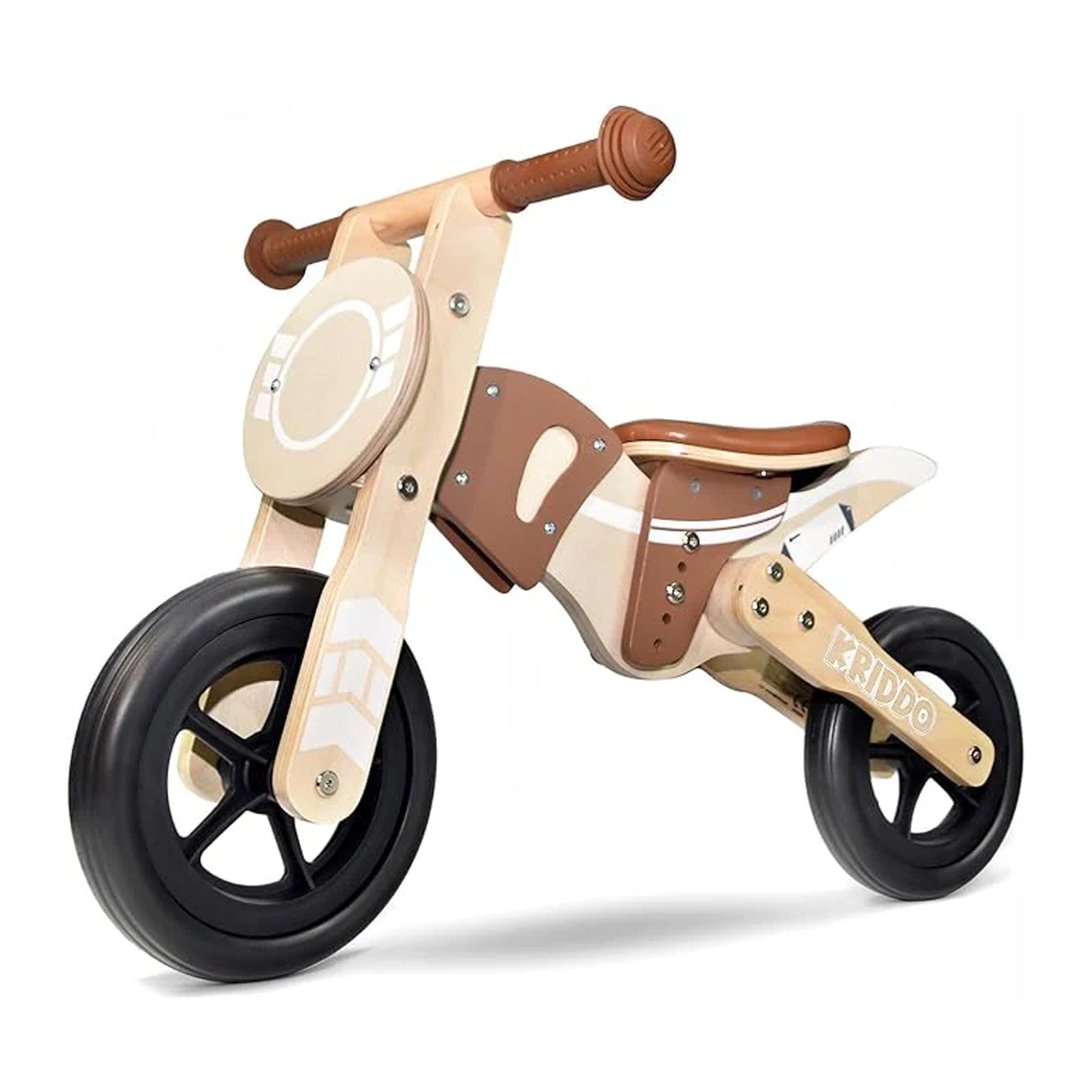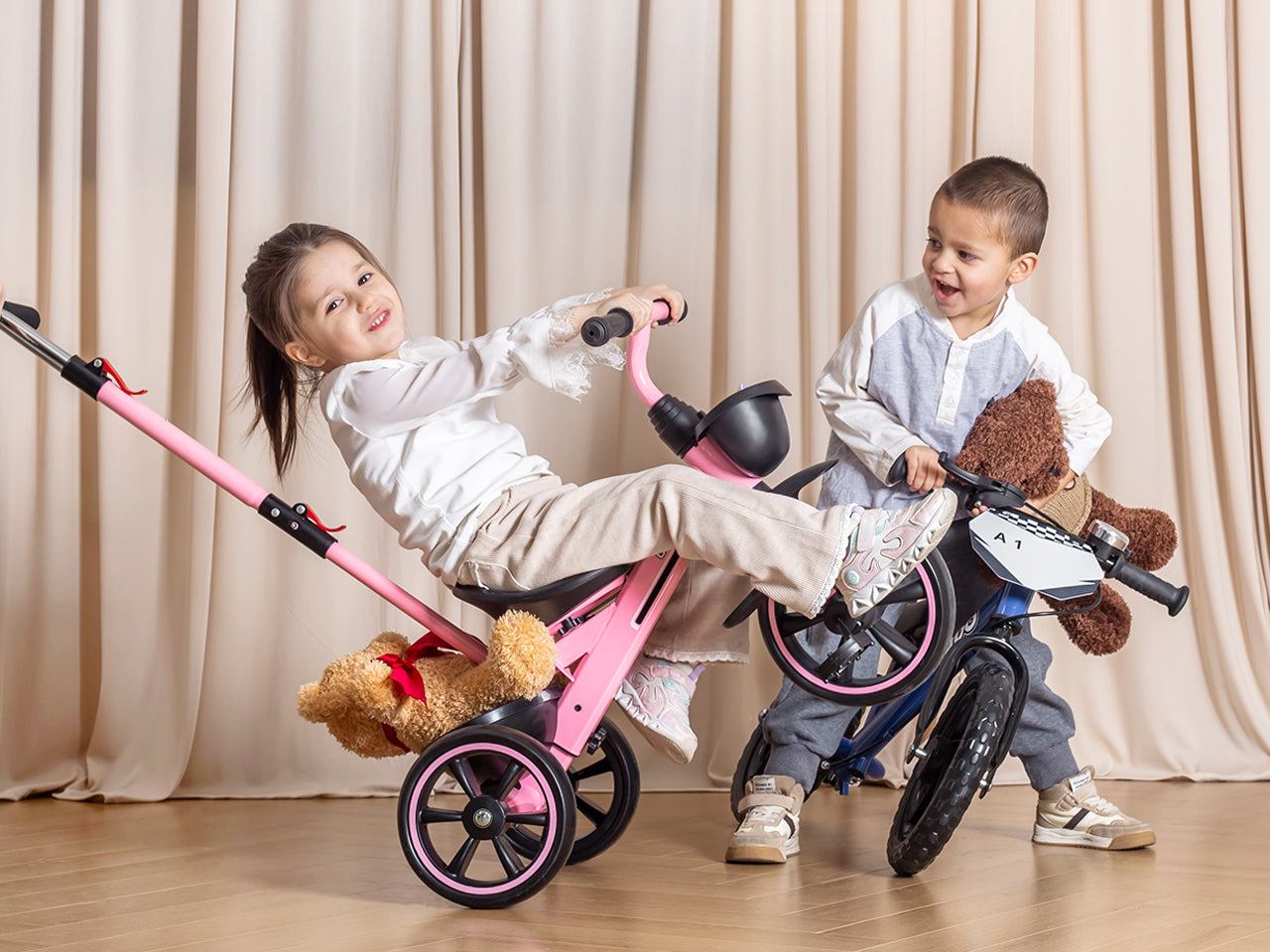Cathy
9-12-2024
Why Your Child Might Be Hesitant on Their Balance Bike
(And How to Help Them Glide with Confidence)

"Have you ever watched your child on a balance bike and wondered why,despite all your efforts,they just can’t seem to glide like the other kids?"
It’s one of those parenting moments that can leave you scratching your head—why does something that seems so simple for other kids feel like such a big challenge for yours?
You’ve seen the smiles on the faces of other toddlers zooming down the street, effortlessly gliding on their balance bikes. Meanwhile, your little one might be treating that balance bike like their personal catwalk—slow and deliberate, each step more about style than speed.
And honestly? That’s more than okay. In fact, it’s super common. Some kids hop on and zoom off without a second thought, like they’ve been riding for years.
Others? They take their time—testing, exploring, maybe even overthinking. A little patience or a nudge in the right direction is all they need.But let’s get to the real question: why isn’t your kid zipping around yet?
The reasons could be as varied as kids themselves, but here’s the reassuring part—most of them are perfectly normal. Some kids shy away from speed, preferring a slower, safer pace. Others are naturally more reserved, taking cautious baby steps before they trust the ride.
So, what's really holding your kid back from taking off?
The reasons can be all over the place, but here’s the kicker: most of them are completely normal. Some kiddos feel a bit uneasy about speed, others are just naturally more cautious. It’s all part of the journey. You might also have a little one who loves the idea of the bike, but hasn’t quite figured out how to balance without feeling unstable.
You know what? It’s easy to forget that balance bikes aren’t just about getting from Point A to Point B. For many kids, they’re about building confidence and body control first—and speed comes second. So, let’s talk through a few ways to help your child find their balance—and maybe even enjoy the ride.

Table Of Content
- Make It Fun First (Speed Will Follow)
- Get the Seat Height Just Right
- Try the "Push and Glide" Method
- Avoid Pushing Them Too Hard (Everyone Learns at Their Own Pace)
- Patience: The Unsung Hero
1.Make It Fun First (Speed Will Follow)
We get it—you're watching the other kids zooming past and thinking, "Why can't my kid do that?" But here’s the thing: if you put the focus on fun, not speed, you're way more likely to see real progress. Trust me, once they’re having a blast, the speed will come naturally.

Encouragement is where it’s at! Start small—why not create a mini obstacle course or have little races around the backyard? Make it feel like a game, not a lesson. When they're enjoying themselves, confidence starts to build—without them even realizing it. And honestly, you'll be amazed at how fast they pick things up once they stop feeling the pressure to keep up with everyone else.
Why not try a little "race" where you both walk beside the bike, mimicking its movements? It shows them just how smooth and easy it can be. This creates a laid-back, playful vibe, giving your child the freedom to explore without feeling any pressure. And soon enough? They might just be cruising faster—and smoother—than you expected.
2. Get the Seat Height Just Right

Here’s a game-changer that’s easy to overlook: is the seat at the right height? When it’s too high or too low, balancing can feel awkward and uncomfortable. For your child to really get the hang of it, they need to be able to plant their feet flat on the ground while sitting. It’s the little things that make a big difference!
This is crucial for building confidence, as it lets them quickly touch down if they feel wobbly.
Here’s the thing: If your little one feels unsteady, they’re more likely to panic or resist. Ensuring that they feel secure and in control is the first step towards teaching them to glide. Keep the seat low enough for them to feel their feet on the ground at all times, and make sure they’re comfortable in their riding position.
3.Try the "Push and Glide" Method
Let me break it down: one of the best ways to help your child move from walking to gliding is the "push and glide" method. It’s super simple—have them walk the bike for a bit, then get them to push the ground with their feet. After a few strong pushes, they’ll start gliding on their own.

At first, the gliding will be short, but that’s how balance works—it’s all about those small victories that build confidence. Little by little, your child will start gliding for longer stretches, and before you know it, the transition to pedaling will feel almost effortless.
And you know what? Sometimes, it’s the tiniest victories that build the biggest momentum. If they manage to glide, even for just a few seconds, celebrate it! That positive reinforcement can make all the difference in keeping them motivated.
4. Avoid Pushing Them Too Hard (Everyone Learns at Their Own Pace)
Look, here’s the thing—every child learns at their own pace. Some will take to the balance bike like a duck to water, while others might need a bit more coaxing. But that’s totally fine! It doesn’t mean they won’t get there, it just means they might need a little more time.
For example, you’ve probably heard the story about how quickly your neighbor’s kid mastered balancing.But comparing your child to others? That’s a trap. Some kids are more cautious, and that’s completely normal. It’s important not to push them too hard or too fast.
Instead, try this: Observe your child’s comfort zone, and build upon that. Start with short, stress-free sessions, and gradually increase the time spent riding as they gain more confidence. You’ll find that once they get the hang of it, their excitement to ride will naturally grow.If you can, try to set up playdates with other kids who are already comfortable on their balance bikes.
The goal isn’t to pressure them, but to let them see how it’s done in a relaxed, no-pressure way. Before long, they might be excited to hop on and give it a try themselves, inspired by the kids around them.


5.Let Them See It First (Monkey See, Monkey Do)
Sometimes, kids just need a front-row seat to the action before they feel ready to jump in. The classic “monkey see, monkey do” thing? It’s actually pretty spot-on when it comes to helping your little one dive into something new. Watching others take that first step can spark the confidence they need to give it a shot themselves.
If you can, try to set up playdates with other kids who are already comfortable on their balance bikes.
The goal is not to make them feel pressured but to allow them to observe how it’s done in a casual, non-threatening way. Before long, they might be eager to hop on and give it a go themselves, inspired by their peers.
6.Patience: The Quiet Power You Didn’t Know You Needed
Patience. And then... maybe just a little more patience. I know, I know—you’ve probably heard that a million times by now. But hey, sometimes certain things bear repeating. Kids? They’ve got their own rhythm, and progress? Well, it’s hardly ever a straight shot. One moment, they’ll be zooming down the sidewalk like they’re training for the Olympics; the next, that bike might as well be a casual stroll in the park.
And honestly? That's just the way it goes.
Here's the thing: Balance bikes aren't just about getting your little one rolling—they're about laying the foundation for coordination, strength, and confidence. It’s easy to get frustrated when they’re stuck in "walk mode," barely moving forward. But you know what? Every step, every push, every ounce of encouragement is part of the bigger picture. They're not just learning how to ride—they’re building the balance they’ll need for life.

In the end, it’s all about trusting the journey.
Balance bikes? They're more than just a ride—they’re a chance for your little one to build balance, coordination, and yes, even a little confidence, all while having a blast. Whether they're cruising along effortlessly or taking their sweet time, they’re making progress. Slow or fast, they're getting there, step by step.
The most important thing is to keep it light, keep it fun, and, most importantly, keep the encouragement flowing. So, while it might feel like everyone else’s kid is breezing through it, just know that your child’s time will come—at their own pace, in their own way.Hang in there, parent. You’re doing great.
Hang in there, parent. You’re doing great.
About us

U.S. Business Founded by Parents
At KRIDDO, we put our engineering and educational backgrounds to create these to ensure they’re safe and of fun for toddlers.











































